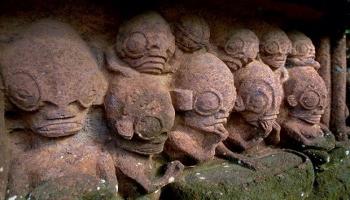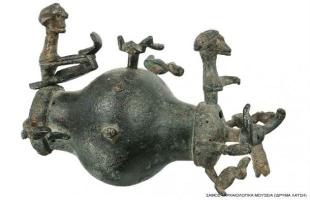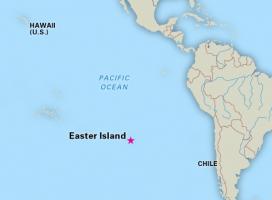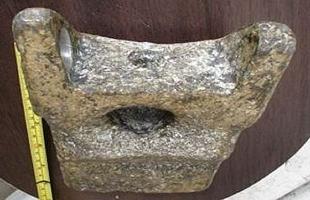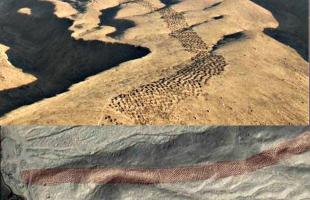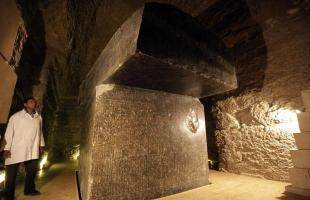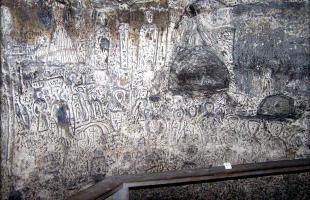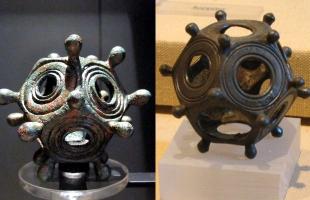The Oak Island Enigma: a Complete History
This article is not about ancient and lost civilizations like all my articles, but it is still interesting for our study, since the mystery is not solved yet!

One summer day in 1795 Daniel McGinnis, then a teenager, was wandering on Oak Island, Nova Scotia when he encountered a curious circular depression on the ground. Above this depression was a tree whose branches had been cut in such a way that it appeared they had been used as a pulley.
Having heard stories of pirates in the area, he decided to return home to find some friends and return later to investigate the hole. For several days McGinnis, with friends John Smith and Anthony Vaughan, worked on the hole. What they found surprised them.
Two feet below the surface they encountered a layer of flagstones covering the hole. 10 feets (~3 meters) down they came across a layer of oak logs stretched across the hole. At 20 feet and 30 feet again they found the same thing, a layer of logs. Unable to continue on their own from this point, they returned home, but with plans to return and continue the search.
It took the 3 discoverers 8 years, but they returned. Together with the Onslow Company (owned by Simeon Lynds, a wealthy mainland businessman), created for the purpose of research, they began digging again. They quickly returned to the 30 foot (~9 meter) depth they had reached 8 years earlier.
They continued digging down to 90 feet (~27 meters), finding a layer of oak logs at 10-foot intervals. In addition to the boards, a layer of charcoal was found at 40 feet, a layer of stucco at 50 feet, and a layer of coconut fibers at 60 (~18 meters) feet.
At 90 feet one of the most puzzling clues was found - a stone inscribed with a mysterious handwriting.
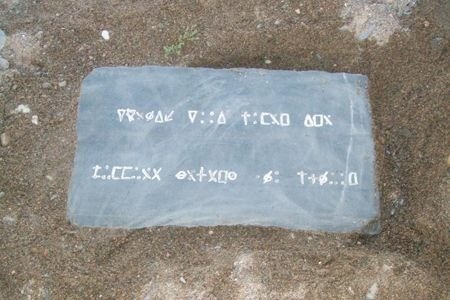
The Halifax professor's translation was:
"Forty Feet below two million pounds are buried"
This translation has a lot of meaning. It turns out to be a simple substitution code where each symbol corresponds to a single letter of the alphabet.
The key to deciphering the inscription is:
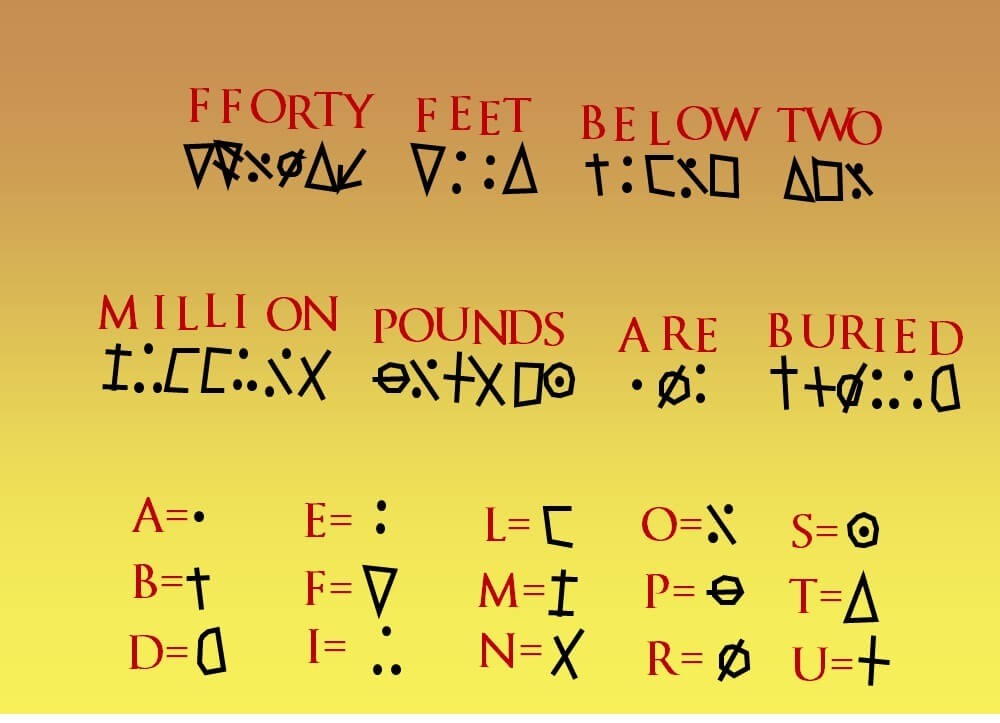
The translation for the given inscription works and it seems very unlikely that this is a simple coincidence. The way I see it, there are two possibilities.
- First possibility: The inscription was a scam used to encourage further investment in research. This is certainly a possibility and could be disproved by the rediscovery of the original stone or possibly the discovery of a new stone. If this inscription is a deception, the F intersected in the word Forty is certainly a very thoughtful touch.
- Second possibility: The professor made an accurate copy of the original stone. If this is true, we have many fragments of information about the creators: since feet are used as unit measurements we know who would have used them and who could not have used them; the translation is in English – unless the creators were very cunning they probably came from a nation that spoke English; the stone was found at 90 feet which means the treasure should have been at 130 feet (~40 meters) (Note: by 1866 the treasure pit had already collapsed 15 feet, but the concrete chamber between 150 and 160 feet had not yet been drilled. The stucco above the chamber began at 130 feet.)
After raising the oak layer to 90 feet and continuing, water began to seep into the hole. The next day the hole had filled with water to the level of 33 feet (~10 meters). Pumping didn't work, so the following year a new hole was dug parallel to the original down to 100 feet. From there a tunnel was dug to the treasure pit. Water entered again and the search was abandoned for 45 years.
The trap
As it turns out, an ingenious trap was set. The Onslow Company had inadvertently opened a 500-foot road that had been dug from the pit to nearby Smith's Cove by the pit's designers. The hole was filled by the sea water as quickly as it was emptied by the pumps.
However, the discovery is only a small part of the intricate plan hatched by the unknown designers to keep people away from the treasure.
In 1849 a new company (the Truro Company) was created to find the treasure and the search began again. They quickly dug down to 86 feet only to be inundated with water. Determined to find out what was buried there before attempting to extract it, the Truro Company began drilling and extracted soil samples. The core drilling produced some encouraging results.
First clues to the treasure
At 98 feet (~30 meters) the drill passed through a spruce platform. Then it encountered 4 inches (~10 cm) of oak and then 22 inches (~56 cm) of what was termed “chunked metal”; Then 8 inches (~20 cm) of oak, another 22 inches of metal, 4 inches of oak and another spruce platform. The conclusion was that they had drilled through two barrels or boxes full of coins. Pulling out the auger, they found splinters of oak and pieces of what looked like coconut shells.
A person attending the drilling mentions that three small gold links, as if from a chain, were also unearthed. Unfortunately no one knows where they ended up.
While searching with the samples taken from the hole, one of the workers saw the foreman, John Pitblado, carefully examining an object and then putting it in his pocket. When asked about it, Pitblado refused to reveal what he had found, saying that he would only show the object to all investors at the next meeting. But he never appeared again. Instead he spent many years trying to buy the east side of Oak Island. Not surprisingly, the owners refused to sell. No one seems to have discovered exactly what Pitblado recovered from the drill that day in 1849, but this must surely have convinced him that the treasure lay beneath the island.
Interestingly, the soil beneath the lowest spruce platform was not compact, indicating that the pit may be even deeper. A subsequent group of searchers would find how much deeper it was.
The Truro Company returned in 1850 with plans to dig another parallel hole in the ground and then tunnel to the treasure pit. Just like before, as soon as they made the tunnel, the water started coming in. Pumps were brought in to try to remove the water but it was impossible to keep water away. During the pumping, someone noticed that at Smith's Cove there was water RUNNING off the beach at low tide.
This finding led to an astonishing discovery – the beach was artificial.
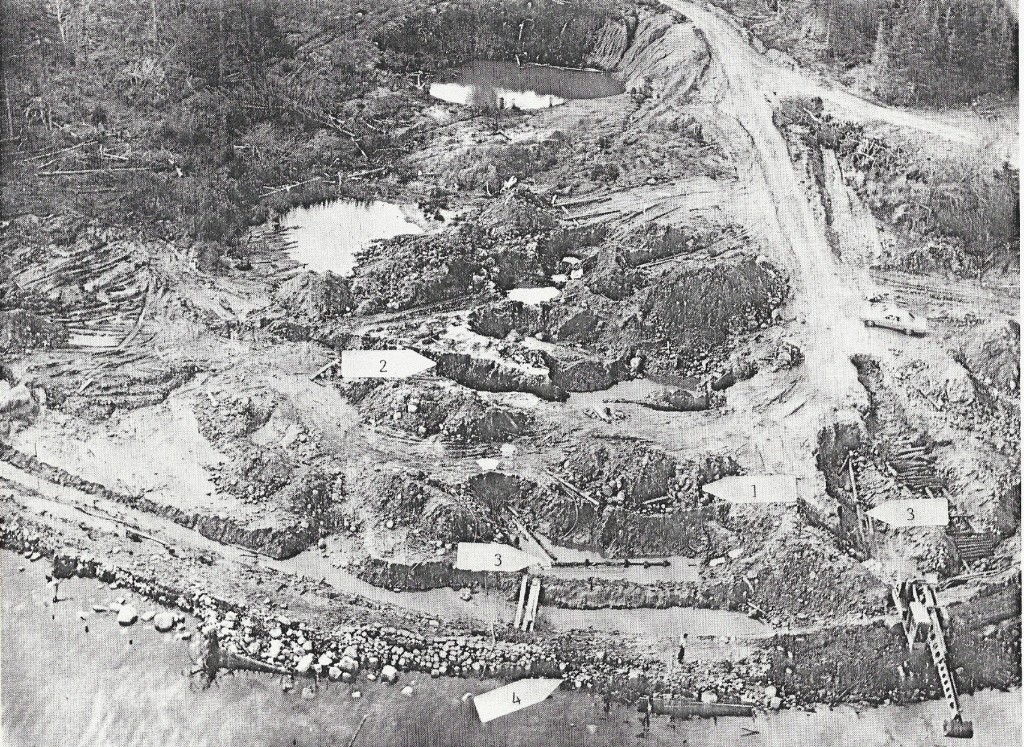
The artificial beach
It turned out that the pit's designers created a drainage system, distributed along the 145-foot (~44 m) length of the beach, that resembled the fingers of a hand. Each finger was a channel dug into the clay beneath the beach and was lined with rocks. The channels were then filled with beach rocks, covered with several inches of eel grass, and then covered with several more inches of coir. The effect of this filtering system was that the canals remained free of mud and sand while water was still able to pass through them. The fingers met at a point inland where they fed seawater into a sloping channel that probably connected to the treasure pit 500 feet (~152 m) ahead. Subsequent research showed that this culvert was 4 feet wide (~1.2 m), 2 1/2 feet (~76 cm) high, lined with stones, and met the treasure pit at a depth of between 95 and 110 feet, filling it to a speed of 600 gallons (~2270 liters) per minute.
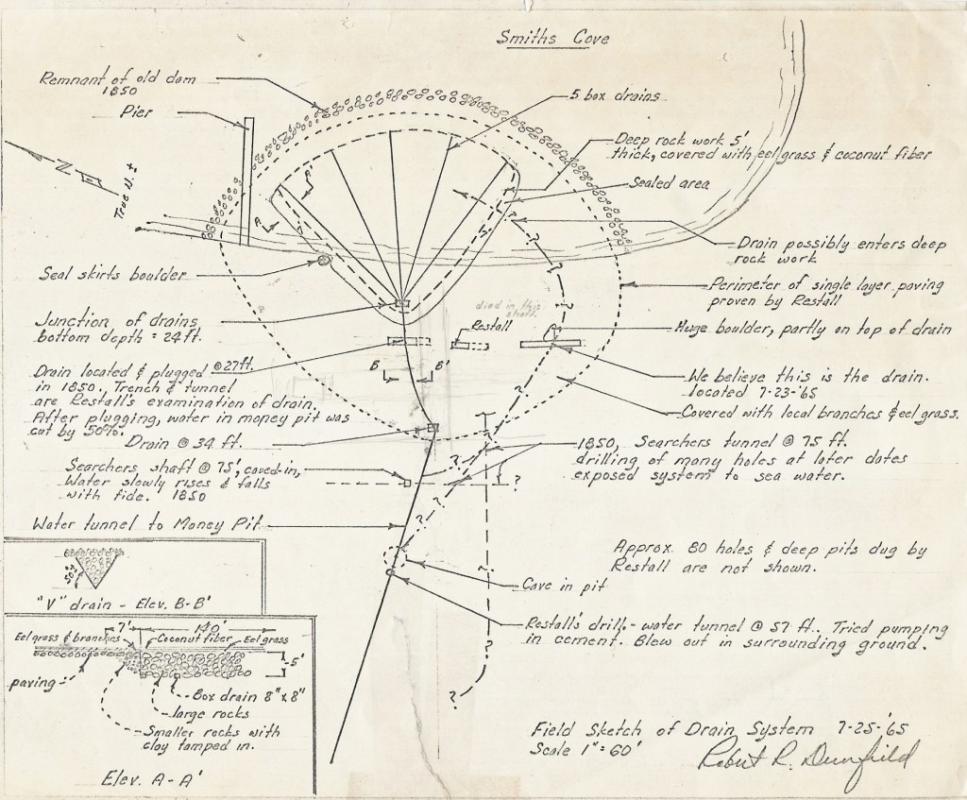
For the Truro Company, the answer was now simple – all they had to do was block the flow of water from the beach and dig up the treasure. Their first attempt was to build a dam right in front of the Smith's Cove beach, remove the water, and then dismantle the canals. Unfortunately, a storm arose and destroyed the dam before it was finished.
An interesting note: the remains of an older dam were found while the new one was being built.
The next plan was to dig a trench about 100 feet inland, with the hope of tapping the underground water channel and then plugging it. Also this project failed, and this was the Truro company's last attempt to reveal the secrets of Oak Island.
The collapse of the pit
The next attempt to secure the treasure was made in 1861 by the Oak Island Association. First they cleared the treasure pit down to 88 feet. A total of 63 men and 33 horses worked in shifts to operate the unloading mechanism. Then they dug a new hole east of the pit hoping to intercept the canal from the sea. The new conduit was dug down to 120 feet (~36 m) without meeting the canal and was then abandoned.
A second conduit was dug, this time to the west, down to 118 feet. Then an attempt was made to make a tunnel to the treasure pit. Once again water began to enter this hole as well as the treasure pit. An attempt was made to drain it and it seemed to work. And then…
CRASH!
The bottom fell out. Water entered the pipes and the bottom of the treasure pit fell more than 15 feet down. Everything in the treasure pit had fallen down into the hole. The big questions were where, why and how far?
In the following years several companies tried to solve the mystery without success. New conduits were dug, attempts were made to fill the beach channel, a new seawall was built (which was destroyed by a storm), and new drilling were made. All this had little success.
The cave
In 1893 a man named Fred Blair along with a group called The Oak Island Treasure Company began the search. Their first task was to study the “Cave-in Pit”. Discovered in 1878 about 350 feet east of the treasure pit, the cave-in pit appears to have been a shaft dug by the treasure pit's designers perhaps as a ventilation shaft for construction of the flood tunnel. It apparently intersected or passed close to the flood tunnel. While being opened by the Treasure Company this began to flood to a depth of 55 feet and was abandoned.
Over the next few years the Oak Island Treasure Company would drill more wells, pump out more water, and still get nowhere. In 1897 they decided to clear the treasure pit down to 111 feet where they actually saw the flood tunnel entrance temporarily plugged with rocks. However, the water dug its way back in and filled the hole.
Then the Treasure Company decided that they would attempt to block the flow of water from Smith's Cove by blowing up the flood tunnel. It didn't work. The water flooded the treasure pit as quickly as ever.
At the same time a new set of soil samples were drilled out of the pit itself. The results were astonishing.
The concrete room
At 126 feet (~38 m) some wood was struck and then some iron. This material is probably some of the material that fell during the collapse of the pit. In other drillings wood was encountered at 122 feet and iron was completely missed; this means that the material can lie randomly due to the fall.
Between 130 and 151 feet (~39/46 m) and also between 160 and 171 feet (~48/52 m) blue clay was found, which consisted of clay, sand, and water. This clay can be used to form a watertight seal and is likely the same “putty” that was found at the 50-foot depth in the pit.
The most important discovery occurred in the space between the stucco layers. A concrete room was discovered. The room was 7 feet (~210 cm) tall with 7 inch (~18 cm) thick walls. Inside the room the drill first hit wood, then a void several inches high and unknown. Then a layer of soft metal was reached, then nearly 3 feet of chunks of metal, and then more soft metal.
When the drill was brought to the surface, another unexpected development was added to the whole mystery. Attached to the tip was a small piece of parchment with the letters “IV”. What the parchment is part of is still a question.
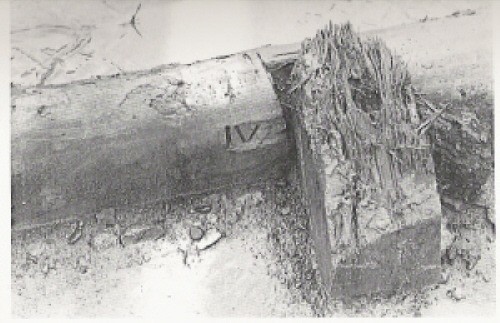
More convinced than ever that there was great treasure beneath the island, the Treasure Company began digging more shafts hoping to get to the concrete room. This resulted in failure due to flooding.
A 2nd Flooding Tunnel
In May 1899, yet another alarming discovery was made. There was a second flood tunnel! This was located in South Shore Cove. The designers had been more ingenious and had done more work than previously thought. While this discovery reinforced the idea that something of value was certainly buried there, it didn't actually bring anyone any closer to finding the treasure.
Blair and the Oak Island Treasure Company continued to dig new wells and drill for more samples, but there was no progress and no new information was obtained.
Between 1900 and 1936 many attempts were made to reach the treasure. They all failed.
The stone fragment
In 1936 Gilbert Hadden, together with Fred Blair, began a new search on the island. Hadden cleared some of the previous wells near the pit and planned to do some exploratory drilling the following summer. However, he made two discoveries away from the pit.
The first was a stone fragment that bore inscriptions similar to those found on the inscribed stone discovered 90 feet down in the treasure pit.
The second discovery was several old beams at Smith's Cove. These large beams appear to have been made by the original designers, due to the fact that they were held together with wooden pins instead of metal. As we will see later these beams were only a small part of a much larger construction.
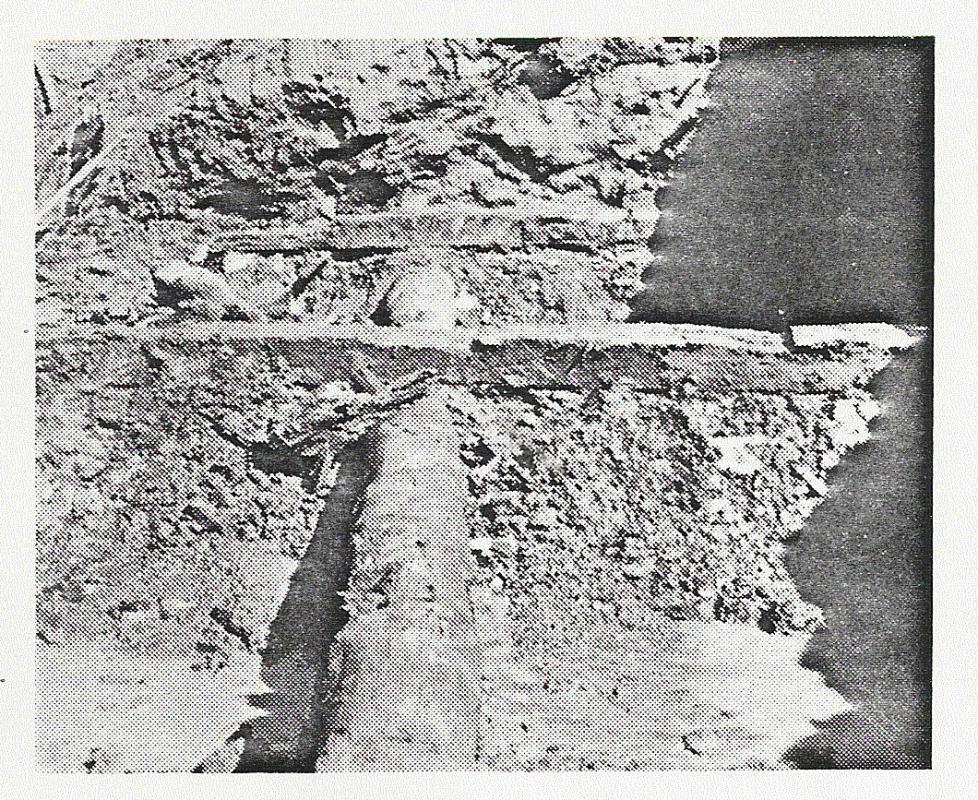
The mystery deepens
The first half of the twentieth century saw several other attempts to recover the treasure, including an expedition by Franklin Roosevelt. Almost all of them concentrated on the problem by digging in the immediate vicinity of the treasure pit. All groups failed, probably because by that time the original location of the treasure pit had become confusing and because most of the land beneath the eastern part of Oak Island was a hive of water-filled tunnels.
The next hunter was Erwin Hamilton. He began his research in 1938 by opening previous wells and doing some exploratory drilling. In 1939 two more discoveries were made during drilling. The first was the discovery of rocks and gravel at 190 feet (~58 m). According to Hamilton they were foreign and therefore placed there by someone. The second discovery came after drilling a previous well down to 176 feet (~54 m). At this point a layer of limestone was encountered and crossed. The drilling brought oak splinters to the surface. Apparently there was wood UNDER the natural limestone.
In 1955 George Greene, representing a group of Texas oilmen, arrived on the island. He planned to locate the treasure by drilling. He made four holes in the area believed to be the treasure pit. He encountered limestone at 140 feet, then the drill passed through 40 feet of empty space before hitting bedrock at 180 feet. This large empty space represented a new discovery. Greene pumped 100,000 gallons of water (~380,000 litres) into the cave, but the water flowed out quickly and he never found out where it went.
Tragedy strikes
In 1959 Bob Restall and his family began their search on the island, which ultimately proved tragic. His only discovery was made on the beach at Smith's Cove while attempting to stop the drainage system. He found a rock with “1704” written on it . Although others believed it to be a hoax left by a previous research team, Restall believed it dated back to the time of the original construction.
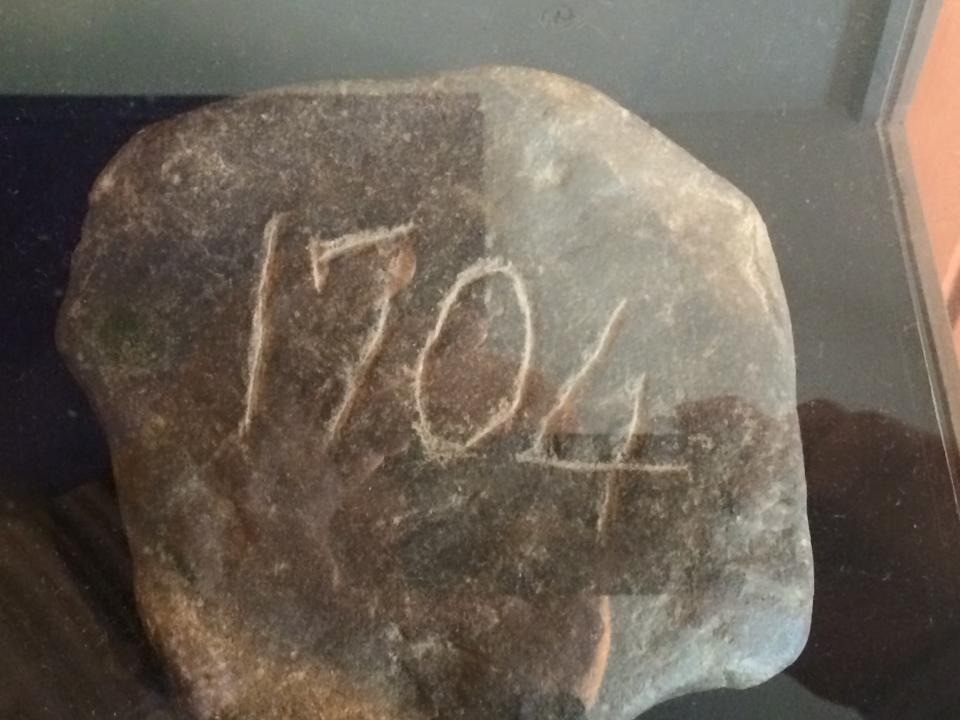
In 1965 the tragedy occurred. While digging a well Bob became unconscious and fell into the water at the bottom. His son, Bobbie, tried to rescue him. Two of the workers did the same. All four were apparently overcome by some sort of gas, perhaps carbon monoxide from a generator, lost consciousness and died.
Heavy machines
Bob Dunfield was the next person to search the treasure on the island. In 1965 he tried to solve the problem with heavy machinery – bulldozers and cranes. He attempted to block the flow of water from Smith's Cove, and he may have succeeded. Then a trench was dug on the south side of the island with the hope of intercepting the other water tunnel and blocking it. The flood tunnel was not found, instead an unknown re-filled shaft was found, perhaps dug by the pit's designers. The shaft apparently went down 45 feet and stopped, its purpose remaining unknown.
Dunfield's other discoveries are based on drilling. It was determined that at 140 feet (~43 m) there was a layer of limestone two feet thick and then a forty foot (about twelve meter) void. At the bottom of the empty space was a rock bottom. This information coincided with a drilling done in 1955. There appeared to be a large natural underground cavern, which is apparently common with limestone in all parts of the world.
Recent discoveries
Daniel Blankenship began his research in 1965. In 1966 he further excavated the original well found by Bob Dunfield in 1965. It turned out that the well went down 45 feet. Blankenship found a hand-worked nail and washer at 60 feet. At 90 feet he encountered a layer of rocks in standing water. He believed that this was part of the southern water tunnel but could not explore further because the shaft could not be prevented from collapsing.
In 1967 a pair of hand-crafted iron scissors was found buried under pipes at Smith's Cove. The scissors were determined to be Spanish-American, likely made in Mexico, and were over 300 years old.
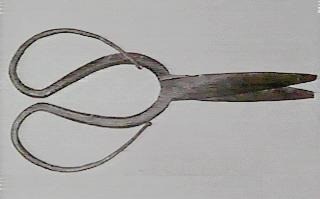
A heart-shaped stone was also found. Smith's Cove revealed a few more secrets in 1970 to the Triton Alliance, a group formed by Blankenship to continue the research. While Triton was building a new barrier, the remains of what appeared to be the original builders' dam were discovered.
The finds included many logs 2 feet thick and up to 65 feet (~20 m) long. They were marked every four feet with Roman numerals engraved on them and some contained pins or nails. Radiocarbon dating of the wood dated them back to 250 years ago. The western part of the island also revealed many objects. Two wooden structures were found on the westernmost beach, along with handmade nails and metal ties. Nine feet below the beach a pair of leather shoes was unearthed.
The Triton Alliance commissioned a comprehensive geological study of the island by Golder Associates of Toronto, a prominent geological engineering firm. They spent an entire summer testing the soil and extracting soil samples from deep underground. Their report, rumored to have cost over $100,000, contained a detailed analysis of the island's geological structure, complete with cross-section maps of subsurface features. The contents of the Golder report were never made public, but the findings encouraged the Triton group to continue their excavations.
Borehole 10-X
The next major discoveries came in 1976 when Triton excavated what is known as Borehole 10-X, a 237-foot (~72 m) steel pipe sunk 180 feet northeast of the treasure pit. During the excavation many apparently artificial cavities were found at 230 feet. A camera lowered into a rock cavity at 230 feet brought back some astonishing images. Immediately, an amputated hand could be seen floating in the water. Later, three chests (of the type of treasure chests, I presume) and various tools could be seen. Finally a human body was discovered.
After seeing the images, the decision was made to send divers down to take a look. Many attempts were made but the strong current and poor visibility made it impossible to see anything. Before the cavern could be fully explored by divers, Borehole 10-X collapsed inward, crushing metal, encasing and nearly killing Blankenship, who climbed out of the hole seconds before it imploded.
Today
Today, Triton is asking the Canadian government for a $12 million loan to continue its excavations. A large well made of reinforced concrete 70 feet in diameter and 180 feet deep is being constructed. Perhaps Oak Island's bicentennial secret will finally be revealed. Unfortunately the island is now closed to the public… but hopefully excursions will be available again soon.
Here you will find the summary of some of the vital information about the Oak Island mystery. Perhaps this information will help you check your theories.
The results of the drilling
Below you will find information on some of the most important drilling that has been done on the island.
Triton – 1967-1969
- Determined rock layer to be at 162 +/- 10 feet
- Found porcelain, oak shoots, concrete, wood, and metal between 172 and 224 feet
- Found tunnels that were cut through rock – below 40 feet of rock
- Found 40 feet of rock, several inches of wood, layer of blue clay, inches of wood and 6-7 inches of void
- Carbon radiodating of wood – 1575 +/- 80 years
- Depression 172 to 222 feet (under Hadden vent) – 30 feet in diameter filled with layers of blue clay with small stones spaced 18 inches apart!!!
- 186 feet: metal and brought to surface a piece of brass (lots of impurities)
- 212 feet: found brick-like material – had been fired
- found concrete – worked by man
- 210 feet: struck some hard metal
Borehole
- Handfuls of metal found at 165 feet – low carbon steel – before 1800
- Spruce found at 155 feet
- 155 feet: eight pieces of steel chain – Swedish steel made before 1790
- Wood at 180 feet
- Metal in several places above and below the rock bottom
660 feet north-northeast of the treasure pit – 1973
- 110 feet: A two-inch long piece of wire – dated 1500 to 1800
- A sheet of solid metal
There are additional excavation plans
Artifacts found
Below you will find a list of artifacts found, or presumably found, on the island. Many of the artifacts have been lost and their existence is only known thanks to documents left by previous finders or writers.
- Copper coin, bosun's whistle, an eye bolt with metal ring set in a rock at Smith's Cove – 1795-1802
- Inscribed stone
- Gold rings – 1849
- Remains of the old dam
- Wood and the end of a barrel removed when the pit collapsed
- Blue clay
- Parchment
- Palm of an ancient anchor – 1931 – missing since then
- Deposit with thousands of broken porcelain flasks
- Rock with “1704″ written on it
- Nail, washer
- Scissors, heart of stone
- Original dam - logs 2 feet thick and up to 65 feet long with Roman numerals marked on them
- Nails and metal ties
- Leather shoes
- 3 drilled rocks and ash piles analyzed and found to be burnt bones!!!
Where in the world is Oak Island?
Oak Island is a 140-acre island off the coast of eastern Nova Scotia, Canada, located in Mahone Bay.
Chronology
- 1795 - Daniel McGinnis finds the treasure pit. McGinnis, John Smith and Anthony Vaughan dig 30 feet and temporarily desist.
- 1803 - The Onslow Company along with the 3 original discoverers begin excavations. They reach 90 feet but are inundated with water.
- 1804 - The Onslow Company digs a parallel shaft 110 feet deep but it also floods when they attempt to tunnel to the treasure pit.
- 1849 - The Truro Company begins digging. They drill through 2 barrels filled with “soft metal”. Also recovered 3 gold chain links.
- 1850 -Underground water pipe and artificial beach discovered at Smith's Cove.
- 1861 - First life claimed by Oak Island. A man was burned to death by an exploded boiler.
- 1861 - The bottom literally fell out and so objects 100 feet away fell much further down the hole due to the weakening of the shaft due to the many tunnels running through it.
- 1893 - Fred Blair and the Oak Island Treasure Company begin their search. Studied the Cave-in pit.
- 1897 - A triangular rock formation discovered.
- 1897 - Encountered a concrete room and found a scroll while drilling.
- 1897 - Second life lost when Maynard Kaiser fell to his death while being pulled from the well.
- 1899 - 2nd flood tunnel, the South Coast Tunnel, discovered.
- 1936 - 2nd inscribed stone and other evidence of original dam found.
- 1965 - In a single day Oak Island claimed four more lives: Bob and Bobbie Restall, Karl Grasser, and Cyril Hiltz.









